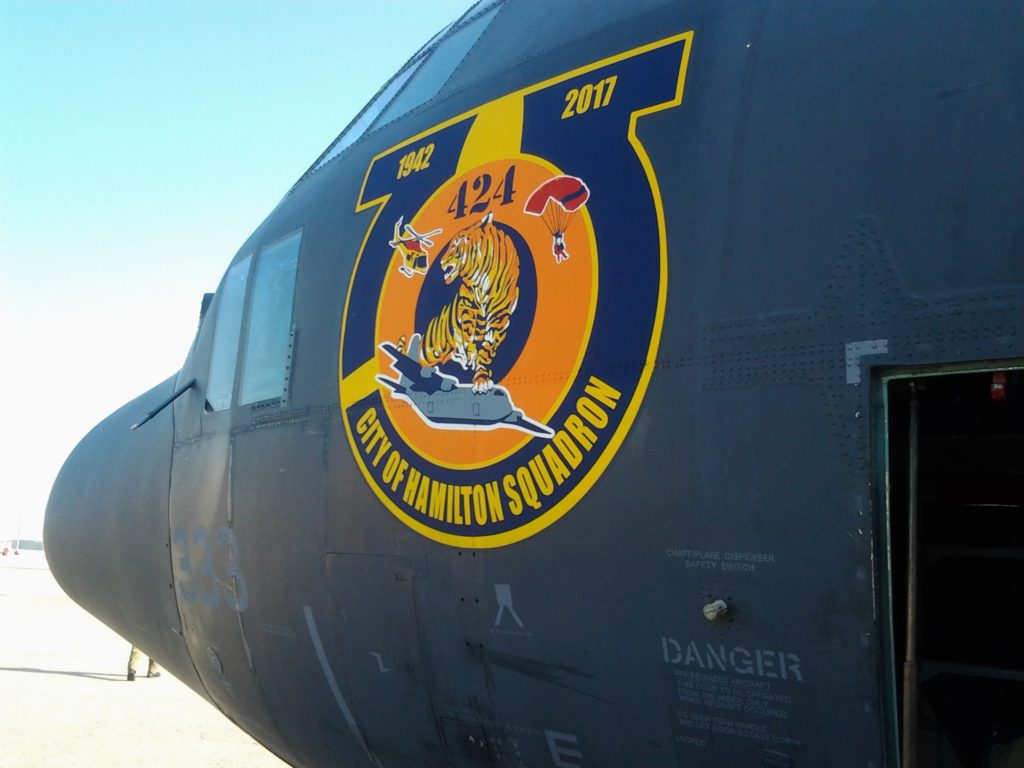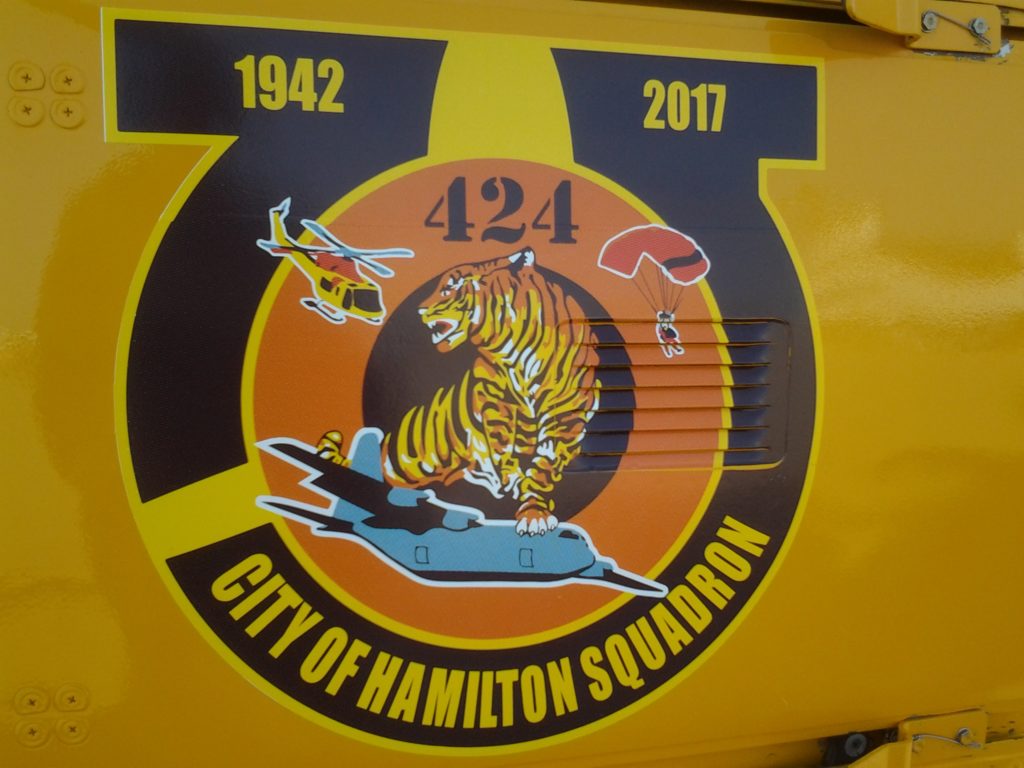Estimated reading time 5 minutes, 6 seconds.
The members of 424 Transport and Rescue Squadron marked their 75th anniversary Sunday with the unveiling of a new logo on a CC-130H Hercules and a CH-146 Griffon.

The logo features the squadron’s namesake, a tiger, above a Hercules aircraft, with a Griffon helicopter and a parachutist over either shoulder, and draws on the original artwork of artist Sgt Thomas Walton, who was commissioned to paint five 424 aircraft in 1947 following his service as a wireless and air gunner on Lancaster bombers during the Second World War.
The striking logo, a little less menacing than the original tiger that included blood dripping from its teeth, was unveiled at the opening of SAREX 17 in Hamilton, Ont., a national week-long Royal Canadian Air Force search and rescue (SAR) exercise that trains SAR squadrons from across the country with volunteers from the Civil Air Search and Rescue Association and local agencies.

The event was especially poignant for the squadron’s commanding officer, LCol Leighton James. The Tigers were first stood up as a bomber squadron in 1942, flying the Vickers Wellington, but were disbanded in October 1945 after the war concluded. They were reformed in Hamilton in 1946 as a light bomber squadron, adopting the nickname of the city’s famed football club.
Leighton, a native of Hamilton, was extremely proud to be showcasing the capabilities of the SAR community where he grew up.
“To be the commanding officer of the 424 City of Hamilton squadron, on our 75th anniversary year, it is a full circle moment,” he said. “This is the pinnacle for me.”
In recent months, he has met with many alumni of the squadron, including 92-year-old Walton, and been reminded of its deep history. “As part of national SAREX and [showing] Canadians what we do, I hope to build up the historical significance of what this squadron actually means,” he said.
The squadron has had a colourful past. In addition to a bomber operation, it served as a fighter force with Mustang and Silver Star aircraft until 1956, and in a light transport and emergency rescue role with Expeditor and Otter aircraft until 1964. After disbanding briefly, 424 was reassembled in Trenton in 1968 and assumed its current role as primarily a SAR squadron.
Despite the high demand for SAR resources at the moment, SAREX includes participation from 413 and 435 Transport and Rescue Squadrons, 439 and 444 Combat Support Squadrons, the Joint Rescue Coordination Centres and CASARA aircraft from across the country, as well as local police and other agencies. It also has observers from the United States, Germany, Mexico, Japan, and Argentina.
The primary objective of the multi-agency exercise is to hone and understand common techniques, tactics and procedures, said James.
“This is a learning environment. The goal is force generation and interoperability. Learn from each other, talk to each other, pick each other’s brains so that we can be better at saving Canadian lives.”
The biggest challenge, he said, is communication. Not just the interoperability of military and civilian systems, but, “How do we communicate to higher headquarters what our needs are? How do we communicate to all the SAR tech community how to proceed (during a major air disaster)? How do we gather the necessary kit to be able to put what we need at the time and place that we need it? Communication…[is] the key.”
The pending introduction of a new fixed-wing SAR aircraft, the Airbus C295 with its array of sensors and mission systems, will cause a paradigm shift requiring different ways of employing all SAR assets, he said.
“We are going to have sensors and technology that we have never had before. And SAREX in its [current] form will likely change because [of] that transition. We are already thinking that way.”
The opening day of SAREX included a mass parachute accuracy event, marine rescues on Lake Ontario, and a small plane crash with injuries that required a Hercules rescue kit drop and SAR technicians to parachute and provide emergency first aid. Monday will feature a response from all participant aircraft and technicians to a simulated major air disaster east of Toronto.








